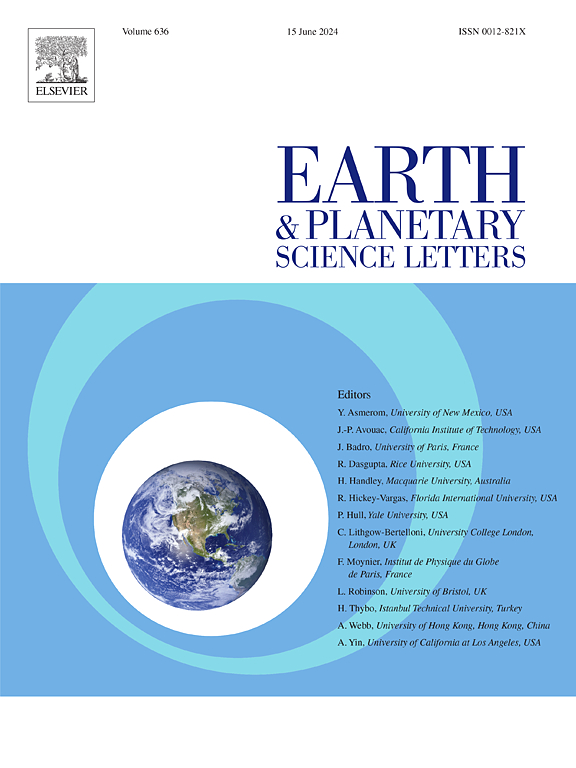Orbital identification of widespread hydrated silica deposits in Gale crater
IF 4.8
1区 地球科学
Q1 GEOCHEMISTRY & GEOPHYSICS
引用次数: 0
Abstract
The Mars Science Laboratory has been investigating the central mound of Gale crater since 2012 and revealed evidence of silica enrichment in several locations, suggesting that the geologic processes related to the formation of hydrated silica could be widespread. A reanalysis of orbital data over Aeolis Mons indicates the existence of an extensive unit rich in hydrated silica. These silica-enriched deposits, found at the base of Aeolis Mons, span elevations from -4513 m to -3351 m. The mapped hydrated silica deposits are spatially adjacent to an erosion-resistant capping unit, previously mapped as the mound skirting unit, which lies beneath the terminal deposits from local canyons and valleys. We hypothesize that the hydrated silica-bearing unit precipitated from groundwater which migrated upwards or deposited as a volcaniclastic silica-rich layer which was rehydrated during the late-stage canyon and valley forming events. The silica-bearing unit beneath the capping unit is protected against erosion by younger fan-shaped deposits and became exposed only recently. The mineralogy and stratigraphic relations with Mount Sharp units imply that the aqueous activities leading to silica diagenesis were likely a basin-wide process that occurred long after the formation of lakes in Gale crater's geological history and experienced limited water-rock interaction since then.
盖尔陨石坑广泛水合二氧化硅沉积的轨道鉴定
火星科学实验室自2012年以来一直在调查盖尔陨石坑的中央土丘,并在多个地点发现了二氧化硅富集的证据,这表明与水合二氧化硅形成有关的地质过程可能广泛存在。对Aeolis Mons上空轨道数据的重新分析表明,存在一个富含水合二氧化硅的广泛单元。这些富含二氧化硅的沉积物位于埃奥利斯-蒙斯的底部,海拔高度从-4513米到-3351米。绘制的水合二氧化硅沉积物在空间上毗邻一个抗侵蚀的盖层单元,该单元以前被绘制为土丘裙带单元,位于当地峡谷和山谷的终端沉积物之下。我们推测,水合二氧化硅含水层是从地下水中析出的,地下水向上迁移或沉积为富含二氧化硅的火山岩层,在晚期峡谷和山谷形成过程中被重新水化。盖层单元下的含硅单元受到较年轻的扇形沉积的保护,免受侵蚀,直到最近才暴露出来。与夏普山单元的矿物学和地层学关系表明,导致硅石成岩的水活动很可能是盖尔陨石坑地质历史上湖泊形成很久之后才发生的全盆地过程,此后经历了有限的水岩相互作用。
本文章由计算机程序翻译,如有差异,请以英文原文为准。
求助全文
约1分钟内获得全文
求助全文
来源期刊

Earth and Planetary Science Letters
地学-地球化学与地球物理
CiteScore
10.30
自引率
5.70%
发文量
475
审稿时长
2.8 months
期刊介绍:
Earth and Planetary Science Letters (EPSL) is a leading journal for researchers across the entire Earth and planetary sciences community. It publishes concise, exciting, high-impact articles ("Letters") of broad interest. Its focus is on physical and chemical processes, the evolution and general properties of the Earth and planets - from their deep interiors to their atmospheres. EPSL also includes a Frontiers section, featuring invited high-profile synthesis articles by leading experts on timely topics to bring cutting-edge research to the wider community.
 求助内容:
求助内容: 应助结果提醒方式:
应助结果提醒方式:


